
In this violin lesson, you will learn the delightful Eine Kleine Nachtmusik – part 1 by Mozart.
Eine Kleine Nachtmusik is one of the most popular compositions in classical music. It consists of four movements, of which the first is the most famous. That is also why we will learn the first movement in this lesson!
Before we get started, make sure to download the sheet music here:
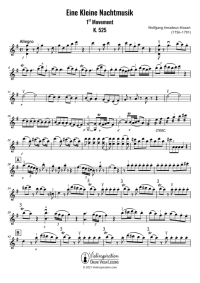
Eine Kleine Nachtmusik by W. A. Mozart
Free Violin Sheet Music
Let’s start learning Mozart’s happy and fun piece together in this lesson!
Introduction to Eine Kleine Nachtmusik
In 1787, Mozart wrote Eine Kleine Nachtmusik for a string quartet in the key of G major. The title means A Little Night Music but usually translates to Serenade in English. That is why in English, this piece is sometimes called Serenade No. 13 for strings in G major.
Eine Kleine Nachtmusik is one of Mozart’s most famous compositions. The piece is light-hearted, joyful and makes for good listening. You will often hear it at weddings and receptions.
The composition starts with the first violinist playing a melody that sounds like an elegant dance. The rest of the instruments quickly follow, joining in and adding different instrumental layers to build up to a crescendo, where all four are playing at once.
Eine Kleine Nachtmusik has four movements:
- Allegro
- Romanze: Andante
- Menuetto: Allegretto
- Rondo: Allegro
The most famous movement is Allegro, which is also the movement that you will learn in this violin lesson.
You can listen to the piece here:
What are the Benefits of Learning Eine Kleine Nachtmusik?
There are many benefits of learning to play this classical composition on the violin. For one, a great way to expand your repertoire on the violin. It is one of those must-learn pieces for any violinist.
But, the most notable benefits lie in the rhythm, bowing, and left-hand skills that you will learn while studying this piece. Some of the techniques that this piece covers are:
- Chords and double stops
- Trills
- Light, short bowing
- Third (and even one instance of fourth) position
- Rhythm counting in eights.
What Should Your Violin Playing Level Be to Learn Eine Kleine Nachtmusik?
The piece is appropriate for lower-intermediate to advanced violin players.
For most adult beginners, it will take between 1 and 3 years of consistent practice to be able to learn to play this piece.
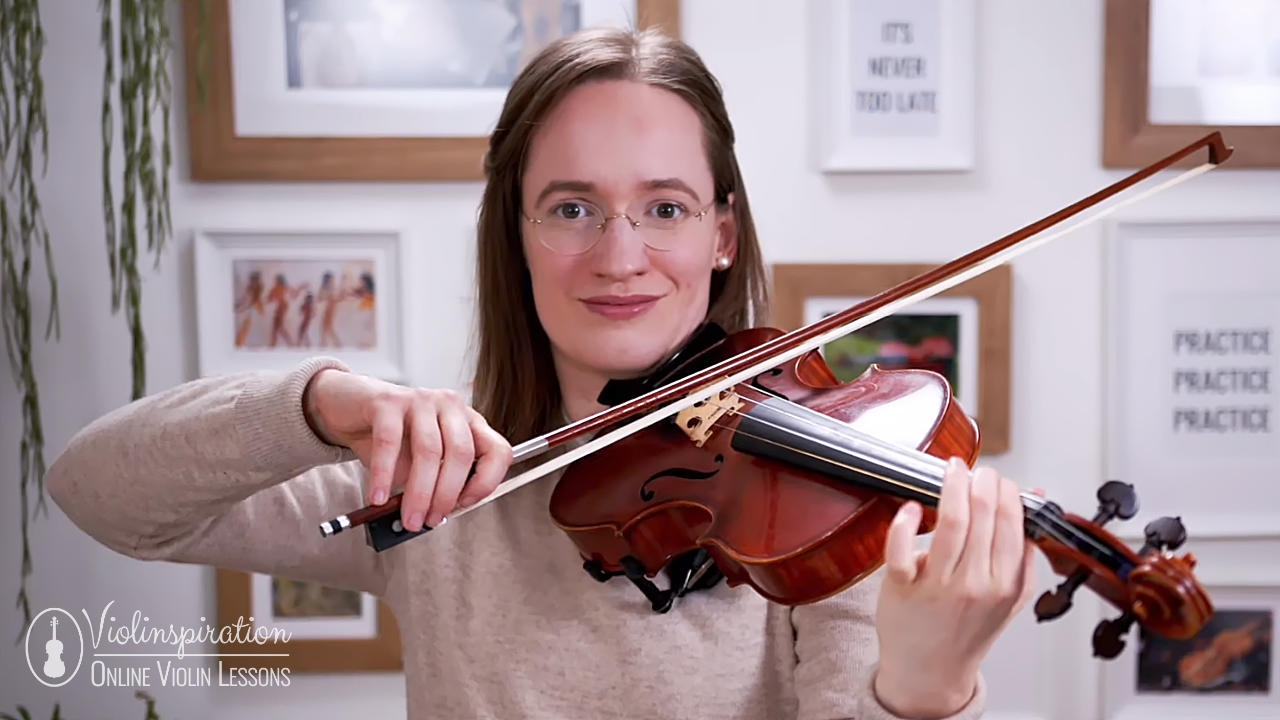
Key and Scales to Prepare for Eine Kleine Nachtmusik
When playing an advanced piece like Eine Kleine Nachtmusik, practicing scales and arpeggios alongside the piece is helpful.
As this piece is in G Major, I recommend practicing the scale of G Major at the very least.
You can either choose to practice the 2-octave G Major scale or, if you feel a little more ambitious, the 3-octave G Major scale would be even better preparation.
The piece also features parts in D Major, so this major scale is another very useful scale to prepare when learning this piece. I recommend practicing the 2 octaves D Major scale that goes into the third position. That will directly prepare you for the third position passages ahead of you when learning this piece!
For an easy overview, I created a PDF with all the scales and arpeggios for you that you can download below:
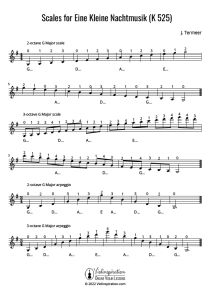
Scales for Eine Kleine Nachtmusik
Free Violin Sheet Music
Practice Tips for Learning Eine Kleine Nachtmusik
Before you start practicing, here are my best tips for learning Eine Kleine Nachtmusik so you can enjoy the piece even more and play it beautifully. If you want to play the piece correctly, be sure to apply each one!
Here are my five practice tips to make sure you best prepare to learn this beautiful piece:
1. Play the Melody Notes Louder
Melodic notes usually have to stick out from the other notes. That is why we need to emphasize these notes. Playing the notes louder is a great way to do this. An easy way to play the melody notes louder, is by using more of the bow.
The melody notes in the main theme
When you are playing the main theme and its variations, you will notice it always consists of a similar note pattern:
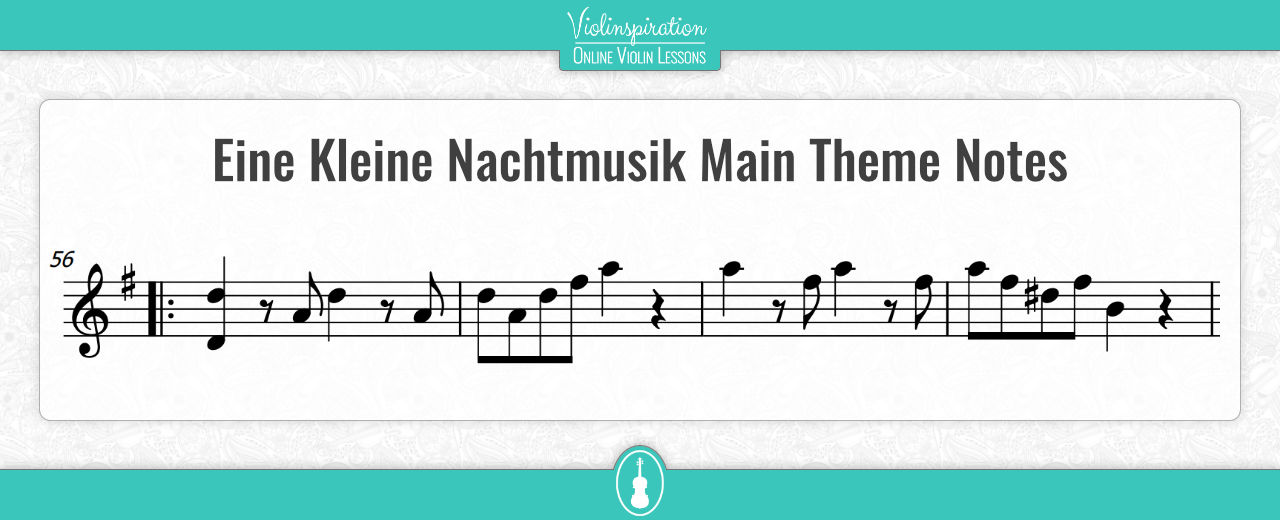
- It starts with a quarter note
- Following is an eighth note which serves as a type of “upbeat” for the second quarter note
- Another quarter note
- An eighth note that serves as an upbeat for the four eighth notes that come after
- The pattern continues like this until the end of the main theme.
The main theme can be divided into two “types” of notes:
- the eighth notes that serve as the upbeat
- melody line.
To play it even more beautifully, try to make these “upbeat” eighth notes softer and the main melodic line louder.
You can listen to the following recording to get an idea of how that would sound. Note how the melody note almost sounds like “accented” compared to the “upbeat” notes of the melody.
Playing melody notes in the chords
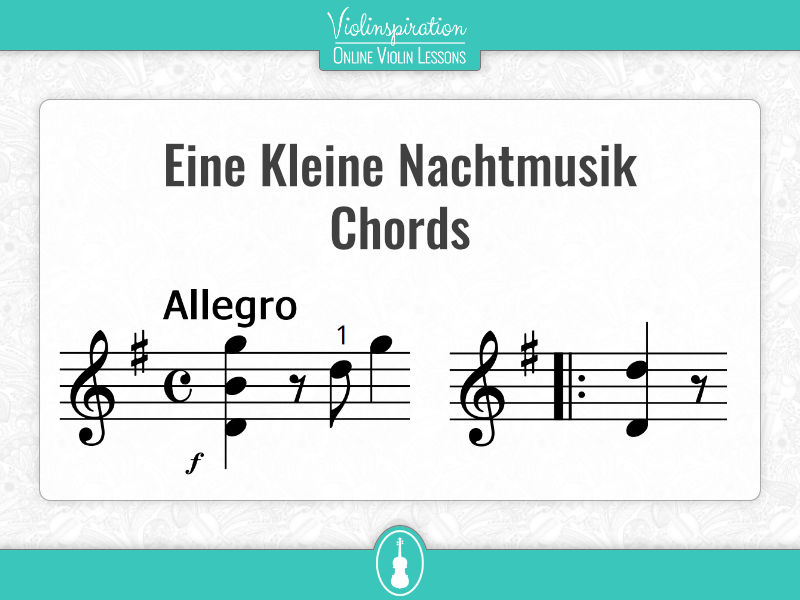
When first learning chords on the violin, many violinists do not consider the function of each note within a chord. Probably we are already happy if we manage to play all the notes in one bow stroke!
However, when playing a chord, there is usually one note that is part of the melody of the piece, and a few other notes that are the “accompaniment” of that melody.
You can figure out which note of the chord is part of the melody line by playing only one note of the chord when playing your piece. If that note sounds like it fits, it is part of the melody. If it sounds out of place, it is probably a part of the accompaniment.
Practically, it means you need to play the notes on the E string louder than the notes on the A and the D string on all the chords that you will find in the sheet music (such as the first and the fifth measure).
2. Use a Short and Light Bowing
When we play pieces from the classical era, like Mozart, we use light bowing.
When you play the piece, it helps to imagine a light and cheerful feeling. Your bow will tend to adapt to whatever type of sound we imagine in our heads while playing.
Find the location on the bow where your bow most easily bounces. For most players, that will be in the middle of the bow. Play the short notes on that location with short and light bow strokes. You will notice that the bow starts jumping slightly – this is perfect!
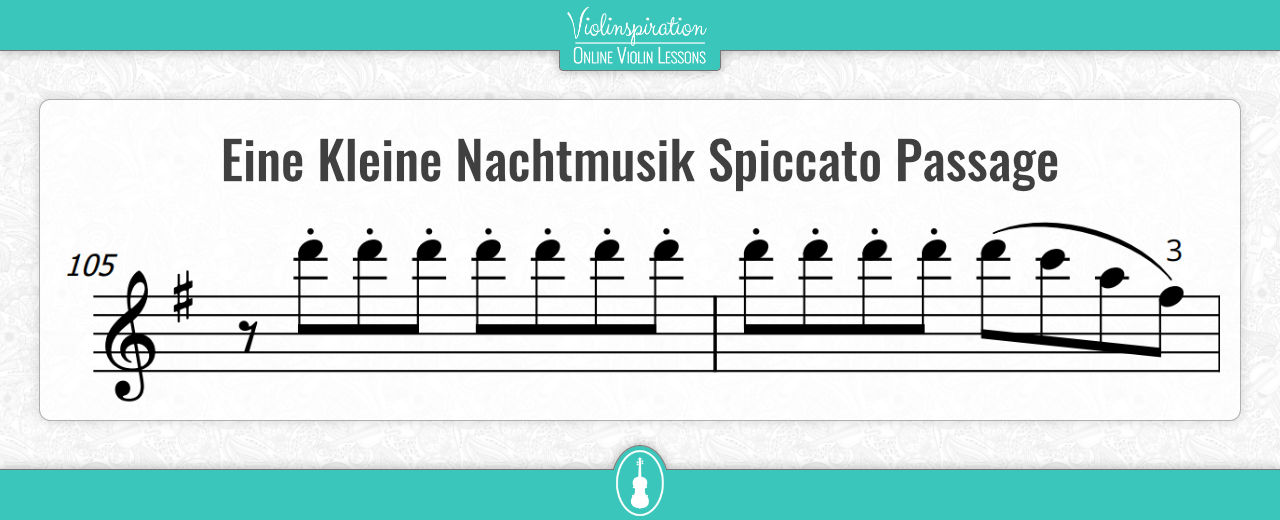
3. Play trills from the lower note
A trill is a musical ornament that consists of two rapid alternations between adjacent tones, which are a semitone or whole tone apart.
You can read a trill in sheet music because it usually has a (tr) symbol above the note.
The player can choose what note to start the trill, either the note written in the sheet music or the note above it.
In classical music from the time of Mozart, we most often choose to start on the note above the note displayed in the sheet music. But in this case, playing the music is a lot easier if you start the trills from the lower note.
The only exception that I would make is the trill right before the C section of the music:
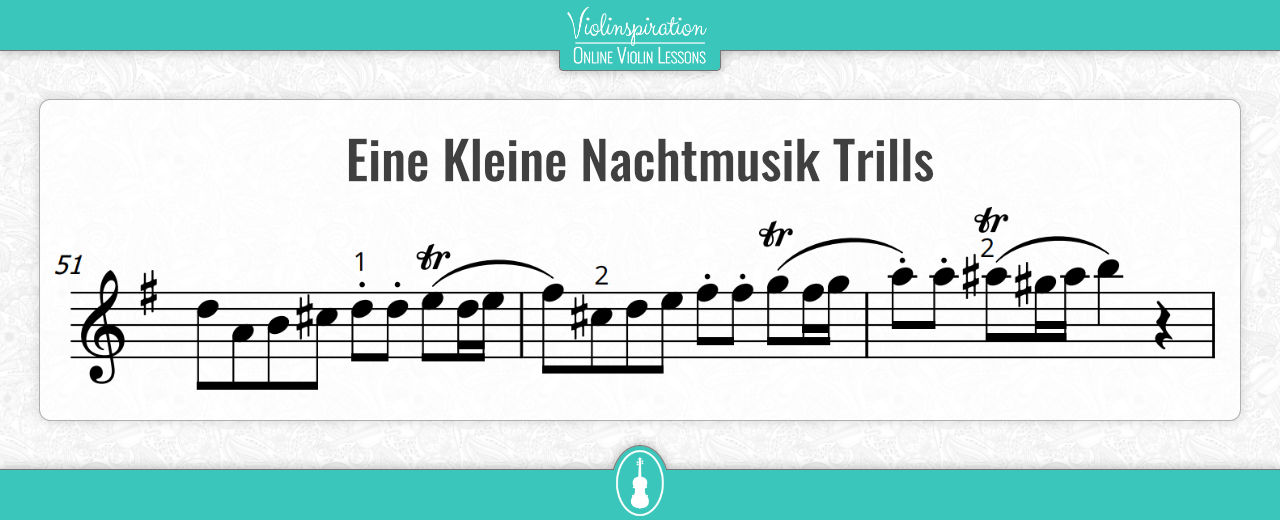
4. Do Not Shift in the Middle of Quick Passages
One of the best ways to prepare for playing Eine Kleine Nachtmusik on the violin is to prepare your fingerings in advance.
I find that one of the most common mistakes my students make is not knowing where they should shift. That results in stopping or slowing down in the middle of phrases.
When practicing this piece, I recommend shifting between phrases. There is a reason to shift at these places, and it truly does make a difference, especially when playing it fast.
Luckily, I did all the hard work figuring out where to shift positions for you and notated all of that in my free sheet music for this piece. If you would like to get the complete score of Eine Kleine Nachtmusik with all my markings, you can download and print it below (2 pages):

Eine Kleine Nachtmusik by W. A. Mozart
Free Violin Sheet Music
5. Leave Room for Rests
Eine Kleine Nachtmusik features many short, eighth, and quarter note rests. A composer never adds a rest without a purpose – the rests are just as important as the notes!
Play the notes the length written in the sheet music, and especially, stop playing the notes in time to make sure you don’t play during the rest. Since you play the piece with short-sounding notes, it is better to play a note a little short than a little too long.
Mozart would surely be proud of you if you do!
Join the Eine Kleine Nachtmusik Masterclass
If you got excited to learn Eine Kleine Nachtmusik, but want to study it with my help, I want to invite you to my new course, Eine Kleine Nachtmusik Masterclass!
This step-by-step lesson program will make learning the piece fun and effortless! It takes you by the hand and shows you how to shift, which bow strokes to use and which details to take into account in all bars of the piece.
Plus in the course, there are two levels, not only an advanced but also intermediate level arrangement for you to choose your playing level.
If you want to master this piece and learn to play it well and effectively while having fun in the process, the Masterclass is for you!
You can find more information and sign up for the Eine Kleine Nachtmusik Masterclass here.

I hope to see some regular blog readers among the students of the Eine Kleine Nachtmusik Masterclass!

Eine Kleine Nachtmusik by W. A. Mozart
Free Violin Sheet Music























